On this episode of the 21st Century Classroom:
Veronica: My name is Veronica, I’m 13, and I’m in eighth grade.
Emily: And why are you here, Veronica?
Veronica: I’m here because every morning I wake up afraid. And so knowing that so many other people feel the same thing? It makes me hopeful, for the first time in a long time. And so seeing this and seeing the change it brings after? Is the best thing I could wish for.
This past fall, educator and parent Emily Hoyler, took part in the Youth Climate Strike, along with her three children. They visited various protests in Vermont, and Emily interviewed some of the students she met at the protests. She asked them why they were there, what they hoped to achieve, and how this day of action related to their in-school lives.
Here’s Emily.
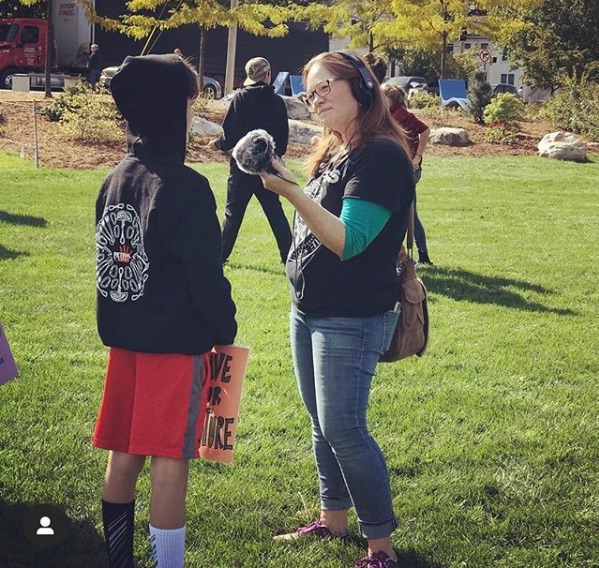
Lately, I’ve been freaking out about climate change. After years of denial about the severity of the situation, this past spring I confronted the evidence. And I found it terrifying.
Why? Because I learned some stuff.
I learned it takes carbon dioxide up to 10 years to *begin* warming the atmosphere. And once its warming effect starts, it lasts for about 40 years.
I learned that 20% of the total emissions since the Industrial Revolution have happened within the past 10 years.
I learned that the Intergovernmental Panel on Climate Change are issuing dire warnings about the need for immediate action. The need to drastically reduce emissions, immediately, if we’re going to avoid catastrophic disruption.
But you know who’s not learning these things? Our students.
At least… that’s what they told me when I met up with them at the Youth Climate Strike.
The Global Youth Climate Strike had been on my calendar for at least 6 months. Spurred by youth climate activist Greta Thunberg’s Friday School Strike for Climate, this event promised to bring momentum to the movement. As an engaged citizen and reluctant activist I knew I wanted to be part of this global protest, demanding world leaders take action. And I wanted to do it with my own children.
I pulled them from school, and we headed out on the road.
We began our day in the nearby college town of Middlebury, where about 500 people gathered on a town green to demonstrate our demands for action.
As we marched we waved our signs at the passing traffic. The honks and waves we received energized us.
Folks of all ages were there in droves — toddlers to elders. I was thrilled to see so many students– many of whom I’d taught in the classroom!
I drifted away as a college professor began to speak of the power of civil action to find some kids to talk to. Why were they here? What are their hopes for the future? Is the climate crisis finding its way into their curriculum? What do they want adults to know?
Milo
Emily: So, tell me your first name.
Milo: My first name is Milo.
Emily: How old are you Milo?
Milo: I’m 12 and I’m an 8th grader.
Emily: Awesome. Why are you here today?
Milo: I’m here today because climate change sucks. It’s pretty terrible and definitely needs to be changed and as soon as possible. Yes, as she’s talking about right now, it can’t… you guys can’t wait for the younger generation, it has to start now.
Emily: Does climate change are the reason we’re here today connect anything you’ve learned about or do in your school work everyday?
Milo: I wish it did more. I know we have a lot of teachers that are in support of us, but we don’t actually learn anything about climate change in like social studies or anything like that and I think that should be probably changed especially because it’s one of the biggest issues by far in our world right now.
B.
B: My name is B.
Emily: All right, B. And how old are you?
B: I’m 13.
Emily: Where do you go to school?
B: I go to Middlebury Union Middle School.
Emily: Why are you here today?
B: I’m here today because I think that climate change is a really big problem for my generation because we’re going to be the ones that are suffering from it because we’re the ones that are in it now. Even the generation above us and all the generations to come will face climate change, unless we stop it now.
Jack
Jack : My name is Jack. I’m 14 years old. I’m a freshman at Middlebury Union High School.
There hasn’t been a time where in a class we’ve really talked about these issues yet, but I don’t think that means that we won’t. Definitely, kids are definitely thinking about these things whether it be on social media or at the lunch table kind of things, in the hallways.
Sometimes just in class you just kind of get on these little tangents about discussions about issues like what’s going to be happening today. I think while maybe it’s not exactly being talked about in school, discussions still happen around the school.
Nora
Nora: Okay. I’m Nora, I’m 14 and I’m a freshman in high school. I’m here – everyone says to make a difference, but I’m also here to make a difference. Also, I feel like it’s important for everyone to see just how many people care and a lot of times it can feel really overwhelming. So, I feel like that’s a lot – it’s really helpful for people to see other people caring as well. Basically, we’re just… there are way too many emissions in the air, which is causing like this, almost like a shield around the earth to trap heat from the sun and the earth is heating, which is causing all sorts of natural disasters and natural effects and repercussions around the world.
Emily: Okay. So how does this connect to what you’re doing in school at all?
Nora: Not really. I feel like that’s a problem. Like, so many people don’t know what’s going on and we need to bring that into school because every generation needs to help, but the generation that’s coming up is one of the most important generations because we’re the ones who are going to be voting soon. We’re the ones who are about to enter the workforce and make changes and all of that. If people don’t know what’s going on, then they won’t know to make the change. They won’t know to influence their actions.
Emily: What advice would you have to educators in Vermont?
Nora: That just teach it, tie it into your lesson somehow. It’s one of the most important issues. Every issue on this earth is important, but if there’s no earth for them to be important on them, what’s the point?
Emily: What about other kids across Vermont?
Nora: Just get involved. Just go to the climate rallies, see, meet people, get involved in that.

Next we drove up to Burlington.
Yes, drove. And while we drove a Prius, we still burned fossil fuels and contributed to the problem we’re trying to address.
We unloaded, grabbed our signs, and began the long trek uphill to find the action.
When we finally arrived, the whole block was swarmed with people. There were jugglers, a brass band, and lots and lots of people. Including students!
Some kids were just excited to join in on the fun (hey, activism is fun, there is joy and celebration in coming together over a cause). And so many students knew exactly why we were there and what they hoped the day would bring.
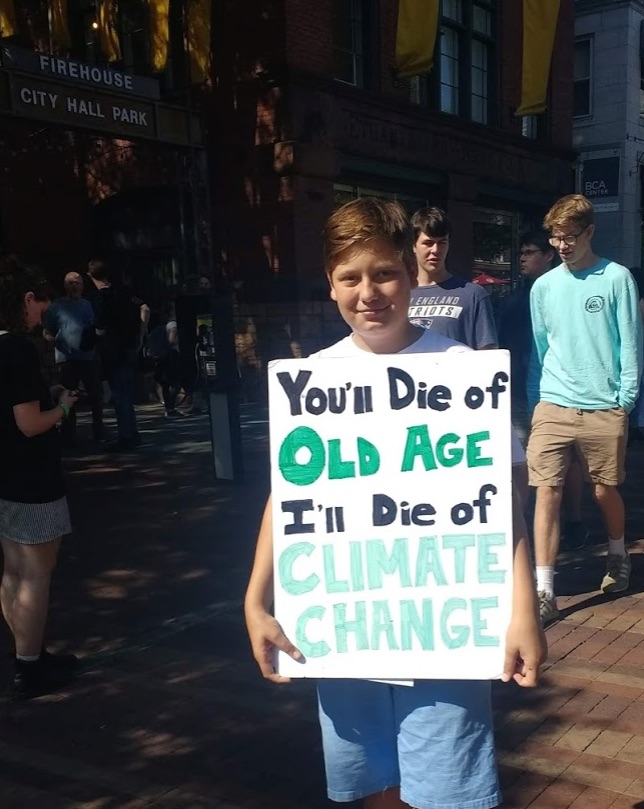
Cheyanne
Cheyanne : My name is Cheyenne and I’m 12. I’m in 7th grade.
Emily: Great. Why are you here?
Cheyanne : I really believe that the whole climate change strike is really important because I want to have children. I want them to grow up in a safe environment and I want to grow up in a safe environment.
Emily : How does this connect to what you do at school?
Cheyanne : Well, we have a really good sustainable sustainability program. We work with a lot of solar panels. We have a huge field in the back where we have a bunch of solar panels and stuff. We’re really committed to that.
Emily : If you could give advice to Vermont teachers, what would it be?
Cheyanne : You really need to enforce that climate change is real and that it is a real issue.
Callie
Callie: I am Callie. I am 11 and I’m in 6th grade.
Emily: Callie, why are you here today?
Callie: To speak out against climate change and to make… if enough people start doing this, then everyone will realize that this really is a problem that needs to be fixed.
Emily: Does what your… I’m going to wait a minute and let that crowd die down for a minute. What I’m going to ask you next though is how this connects to what you do in school or what you’re learning about? Let’s let this exciting crowd… look at all this energy. How does this connect to what you’re doing in school?
Callie: We have learned a bit about climate change, but most of it I’ve just learned about on my own time and schools definitely are not doing enough, and spreading enough correct information about climate change and all that needs to be done about it.
Elsa
Elsa: My name is Elsa, I’m 13 and I’m in eighth grade.
Emily: Why are you here?
Elsa: To kind of find a voice for climate change, I guess.
Emily: Tell me more about why that issue is important to you?
Elsa: I guess it’s at a point where—it’s kind of putting off your homework, we’re all really good at procrastinating and we’re at the point where we kind of just kind of like sit down and do our homework otherwise we are not going to have it for tomorrow in class. That’s kind of where we are right now. Where like the world and climate change if we don’t do something right now, we’re all just going to blow up. I need you to help us. To give us a good set up so we can learn and grow and be the best people we can be and help the world.
Sadie
Emily: Okay. Name, grade, age.
Sadie : Sadie. 7th grade and I’m 12.
Emily : Why are you here?
Sadie : I think that it’s really important. I mean, adults are just going to die of natural causes, but if we’re going to be alive when the world is going to end of climate change, I don’t want that to happen.
Emily : Do you think you should get credit for being here? How will an event like this connect to what you do at school?
Sadie : Well, at school we are really aware of how what we do at school and what we do in our out of school lives affects the environment and we talk about it a lot. I think a lot of kids in our school have come here and we’ve seen a lot of them. I think that we should get credit for being here because it’s important. Actually, our school is having their own rally outside on our lawn. I think that is really important that we show people that it matters and that we care.
Emily: Awesome. Anything else you want to say?
Sadie: No.

While I was happy to hear some kids talk about how the climate crisis showed up in their curriculum many kids said they don’t talk about it at all at school.
That concerns me.
And I hope it changes.
But… I also totally get it.
As a classroom teacher, each minute of my day was spoken for several times over.
Human impacts on the environment (i.e. climate change) are covered in both the main science & social studies curriculum guidelines. (For you teachers, that’s the Next Generation Science Standards and the C3 social studies standards.) But there are also a multitude of other concepts that need to be addressed and taught.
Not to mention: sometimes it *feels* like climate change is a partisan issue. To be clear, it is aaaaaabsolutely not. The scientific evidence is clear and evident and readily available. But we live in interesting times. And there are narratives right now in the public discourse that are both partisan and, well, complete fabrications.
[Spooky editor voice: Merriam-Webster defines “fabrications” as “made up, for the purpose of deception.” See also: lie, falsehood.]
And every teacher knows that getting into politics in the classroom can get tricky.
So I have some hunches about why many kids told me that they aren’t learning about climate change at school.
But as an educator *and* a parent I’ve been doing some deep thinking lately about how education can prepare our children to meet the challenges of the future… and the present. How can we prepare students for an unknown future? What skills, attitudes, knowledge, and experiences will students need to survive in a world riddled with catastrophes like extreme storms, rising seas, wildfires, acidifying oceans, widespread hunger, air pollution, and the corresponding economic and social unrest and possible collapse?
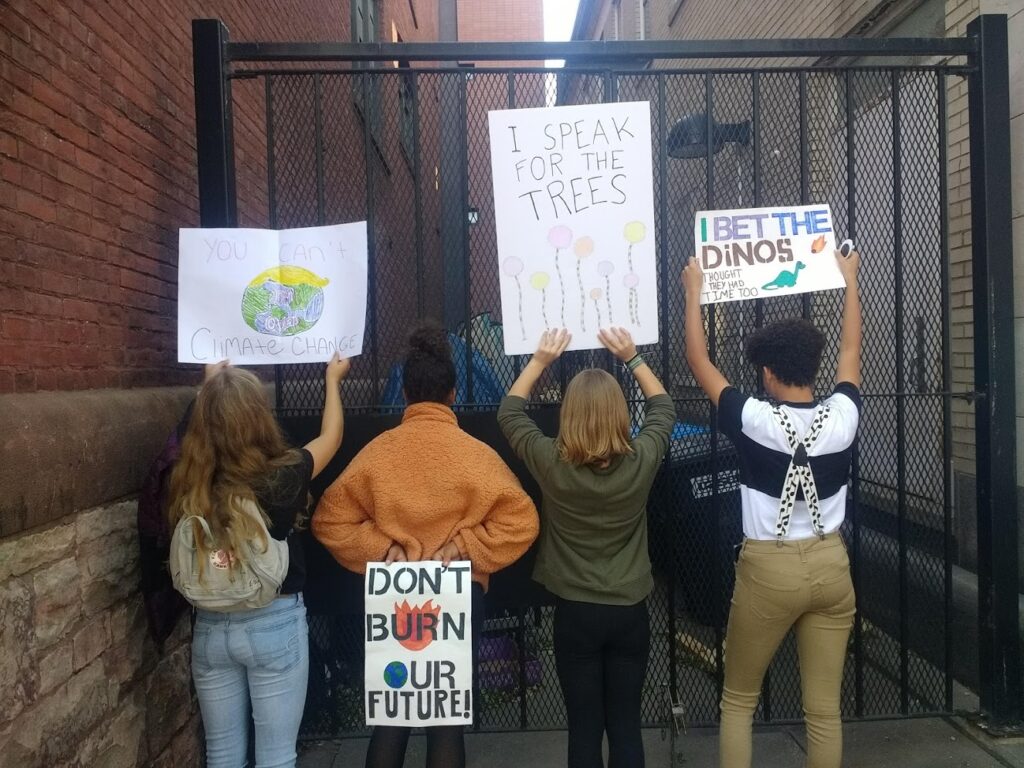
Amelia
Amelia: I’m Amelia and I’m 13.
Emily: All right. Why are you here?
Amelia: Because I feel like if we’re not— if I’m not, then how are people going to get the word out and I skipped school because people are realizing that I’m skipping school to come to this because this is more important. If the teachers start realizing that, they’ll be like, “Oh, we actually have to start informing students about that and making known to people.”
Emily: Awesome. Is there anything you want teachers in Vermont to know?
Amelia: Just that like, we’re skipping school because, not because we want to skip class, but because we need to be here to get the word out. And that if they start realizing that, then, yes, they’ll understand that it’s actually a problem.
Sophie
Sophie: Right. Okay. I’m Sophie. I’m 13 years old. And I’m in 7th grade and I go to FHTMS [Frederick H. Tuttle Middle School].
Emily: You’re here with your classmates?
Sophie: Uh-hmm.
Emily: Why? Why did they let you leave school?
Sophie: To protest against climate change.
Emily: How does to what we’re here to today connect to what you’re doing at school?
Sophie: What we’re learning about kind of how to group together and work together. This is kind of a community thing. We’re working together to change it.
Abby
Abby: I’m Abbyi. I’m 12. I’m in 7th grade. I go to Tuttle Middle School.
Emily: Why are you here?
Abby: I think really because I feel called to this issue and as I grow up, I want my children and grandchildren to be able to live in a world that’s as beautiful as it is right now we’re living.
Emily: Does this connect to what you do at school?
Abby: Yes, it does in many ways especially science, we’re working on engineering design process and how people communicate in different ways. It should get something done. I think this is a great example of that.
Simone
Simone: I’m Simone. I’m in 8th grade.
Emily: And uh, why are you here?
Simone: Because I want a future where I can do anything I want in an environment where I don’t have to struggle to breathe or anything like that. We are fighting for climate justice to make sure that every generation before us still has a world that they can stand on and see the grass below their feet.
Emily: How does this connect to your schoolwork or what you do in school?
Simone: School, in my opinion, is all about preparing for the future and without the world, there is no future.
Emily: Uh….Mic drop!
Simone: Tell your students if you have… if you’re aware of this strike but you still have to go to work? Tell your students, this is a strike, you can go to this, to stand up for what you believe in.

A couple weeks after the Climate Strike I went to a professional development workshop held by the Vermont Energy Education Program — VEEP.
Vermont’s largest greenhouse gas contributions come from our heating & cooling, electricity, transportation, and agriculture systems . And all of these systems are present in schools.
VEEP educators help students measure lighting, heat loss, and track energy use in pursuit of making their own schools more energy efficient, thus lessening their carbon footprint.
Deanna: “I am Deanna Bailey. I am Director of Education for the Vermont Energy Education Program. We hope in our deepest of hearts that students take the– it’s very personal for students. So many students are concerned about the climate now, much more so than our generation, was as we were growing up. So our hope is that we can help students feel empowered to make a difference.
We do a lot around supporting schools, to supporting students in particular to latch onto and investigate an aspect of their school that they’d like to change some energy use within. We’ve had groups of students motivated to go to the school board and request putting solar panels on, and using solar panels instead of using just fossil fuels for electricity. So, the ideal is to get into students’ personal interests and tap into that. And then with that, find out, okay, what project do you want to do? How can we support you? And that’s what we’re here to do: is support you to make a difference.”
Another way VEEP helps bring our energy use to the forefront is by making the invisible visible. After lunch, we headed down to the parking lot to measure auto emissions. With a simple stopwatch and a 10-foot clear plastic bag (and a few brave teachers with car keys), we were able to capture a few different car models’ emissions directly from the exhaust pipe.
We timed how long it took the bag to fill at each car. Spoiler: the SUV filled that bag much, much more quickly than the hybrid.
I have to admit that even I was blown away watching that bag fill up. I mean I knew our cars produced emissions, but to literally see the emissions – and the difference between the vehicles – made a deep impression on me.
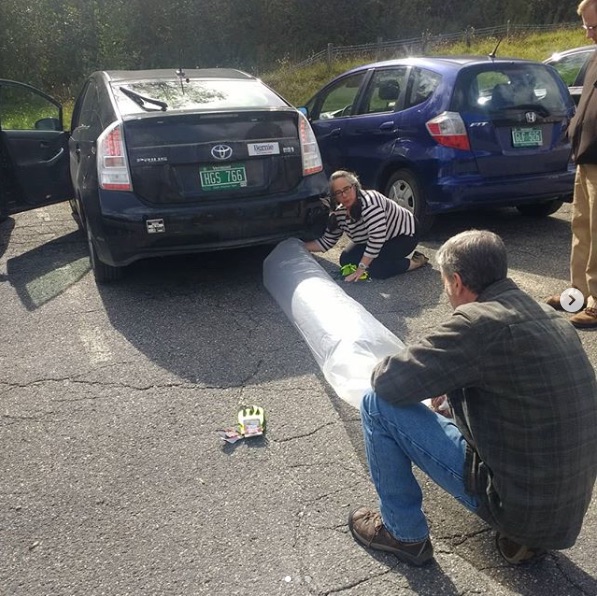
Putting the onus on educators to include climate change as a structured topic in their classrooms is probably not the one-size-fits-all solution that can harness student passion for saving the planet. We need organizations like VEEP who can provide structured, informed activities for students that extend beyond their school walls and their school day, and give them regular outlets for getting involved and making a difference.
Here’s Deanna Bailey again.
Deanna: “It’s a personalized experience and a class. It begins at the class level with the teachers, supporting the teachers to understand how they can support the students to do this with them, with support from VEEP if they’re interested. It’s not just the curriculum, but it’s us actually getting in there, putting people in classrooms with side by side with teachers to help students understand how to make a difference.
We have this Youth Climate Leaders Academy. We started it two years ago. It was relatively small the first year, last year it grew at almost doubled this year it’s up to 100. We had to cap it at 120 students. There are so many students that are really wanting to make a difference. It’s heartening and I’m sad for them that we’ve done as much damage already as we have. How do we retreat from that and support students to feel empowered and feel like what they’re doing is making a difference. These are huge obstacles to overcome and the only way we’re going to do it is collaboratively with a lot of people working to make change happen.”

Now, Vermont’s unique — in a lot of ways — but in our education system, we have something called Act 77, legislation that provides students with more vigorous opportunities in personalized learning. With Act 77, students can explore flexible pathways to learning — basically they can identify things they’re passionate about and ask schools to support them in learning in real-world ways. And students can demonstrate proficiencies in learning, instead of the traditional grading scale. How does this relate to climate change?
Deanna: The personalized learning and proficiency go hand-in-hand. It’s really rethink of the way, the entire way that we do things in classrooms, putting so much agency into students’ hands and then taking the time to figure out how to help them get to a place where they achieve proficiency as opposed to achieve a grade from seat time. That’s a monumental shift for us, for us as educators. It’s a huge shift for students as well. There absolutely are ways that this: the whole strategy, the whole approach that we really boost at VEEP is about helping students be proficient in those transferable skills. We need to be able to think critically and be able to be socially responsible citizens. And that’s really what this is all about. It’s… having the skills to be able to take on a project that makes a difference in your community.
Now, as much as we need VEEP, and flexible pathways and proficiencies? We. Need. #ClimateStrike.
June
June: My name is June, like the month and I’m 11 years old.
Emily: Why are you here June?
June: Well, my friends were here and I really love the environment. I love polar bears and I love winter… skiing, ski racing. I really want the environment to stay healthy.
Luke
Luke: Hi. My name is Luke. I’m 13 years old, 8th grade. Um… yeah.
Emily: Why are you here today?
Luke: I’m here today because I think that climate change is so important. We need to stop it and if we don’t stop it, then it’s going to be a disgusting world. It’s going to be hot. The ocean levels are rising. It’s anything that people can do, big, small donations, striking, literally, anything helps. Just that tiniest bit of help can do a lot.
Emily: So, what do your teachers think about you being here today?
Luke: Well, when I first heard about this and I asked my teacher if I could go, if I could go to this, he said, “Sure, just call your parents, have them give you permission” and I called my mom, and then, she tried to give permission to my teacher. And she asked him, “So what is *your* personal opinion on this?” To that, my teacher responded, “Well, we’re doing a civics unit right now, and it’s about kids and how they can take action in government and so, I think that this is the best thing that could be done.”
Veronica
Veronica: My name is Veronica, I’m 13, and I’m in eighth grade.
Emily: And why are you here, Veronica?
Veronica: I’m here because every morning I wake up afraid. And so knowing that so many other people feel the same thing? It makes me hopeful, for the first time in a long time. And so seeing this and seeing the change it brings after? Is the best thing I could wish for.
Emily: So tell me a little about why are we here today?
Veronica: We are here today because the older generations have not been responsible. They have not been caring, they have not been conscientious. And so now that we have the mantle of change, we need to do the best we can with it!
Emily: So how does this connect to school? Does climate change show up at school? Does activism show up at school?
Veronica: I think not as much as I’d like. Certainly it’s being talked about. I think our schools have been stuck on too much things happening in the past? And so I’d certainly like to see more stuff about climate change being talked about, more things happening now.
Emily: And you’re here *with* your school today? Are you getting credit for being here? Do you think you’ll follow up on this?
Veronica: I’m sure we’ll do work to follow up, but this is totally optional. And so I came because I wanted to.
Emily: If you could design the curriculum, what would be most useful? What do you need to face the future that we’re facing?
Veronica: I think… certainly more skills about how we can create change? I think also to be responsible in a world we live in? And also how to decide… what is best for ourselves.
Emily: Do you feel supported by adults, looking around at the turnout today?
Veronica: I do! I think also… I… am incredibly lucky? My family and the adults that I’m surrounded by have been incredibly supportive about the decisions I’ve made, influenced by the climate? I think that… there’s always room for improvement? And I think there’s certainly room for improvement here, but I think that… I do feel very supported.

Later, I chatted with my own kids about their experience at the Climate Strike. They’re still young — ages 6, 9, and 10 — and while I think they grasp that we’re facing some serious challenges they don’t yet fully understand the extent. And for that I’m grateful. But I also want them to know they have the opportunity to act, and to change the world — in school, or out.

Phoebe : My name is Phoebe and I’m 6 years old. I’m in 1st grade.
Emily : Phoebe, what did you do today?
Phoebe : We went to the climate strike.
Emily : Why did you do that?
Phoebe : We didn’t want the planet to look bad. My cape said, “Global Game Changer.”
Emily : What’s a global game changer?
Phoebe : A global game changer is someone who changes the planet.
Emily : Are you a global game changer?
Phoebe : Yes. We’ve been trying to make the world a better place.
Emily : Thank you for making the world a better place.
Phoebe : You’re welcome.

Margaret: I’m Margaret and I am in fourth grade
Emily: Okay. Margaret, why did you go to the climate strike today?
Margaret: I went to the climate strike because my parents forced me to, but I wanted to go to school. But also, to help save the earth. To help the earth, yeah.
Jack: My name is Jack. I’m in fifth grade and I’m 10.
Emily: All right. Why did you go to the climate strike today?

Jack: Because it was basically a demonstration for climate and I don’t like climate change because it’s not good.
Emily: What is climate change?
Jack: It’s CO 2 in the atmosphere that lets it get hot. Yeah. The heat gets in and then it doesn’t come back out.
Emily: Don’t put the chip in your mouth if you want to keep talking to me. All right? Why is striking for the climate important?
Jack: Because climate change is bad.
Stinkers. You’ll thank me for this field trip later!
Anyway. I want our children — mine, and yours too, all of our students — to know: we are trying. And I want them to remember painting banners and marching, and standing up for our neighbors near and far, standing up for our planet and all the other living things we share this place with.
I want them to know why we’re moving toward a more local diet. I want them to know why we’re shopping less and when we do it’s at thrift stores and the Farmer’s Market rather than online.
They should know that our actions matter. That our actions speak our values. That we all live upstream and we all live downstream, and every choice makes a difference. And I want them to know that we have a responsibility to use our privilege to improve the quality of life for all.
Even if it means missing school. Even if it means being marked, ironically, “absent”.
I want you to know, educators, that if you’re considering bringing the climate crisis into your curriculum, help is out there. Heck, get in touch with me, I’d love to help you!
But really, let’s just start talking more with kids about the real-world issues that are on their minds. They need us to be honest with them, and they need us to listen. And they need to be empowered to tackle the challenges of the future.
Deanna: The work that we do at VEEP is definitely the same mud that we’re all crawling around and trying to help students build those transferable skills and make them really excellent lifelong learners that seek out change, that want to make a difference in the world, that have the skills they need to make that difference. Helping them be proficient, all of those skills is very important. You can do it through climate and energy.
Reach out to VEEP because we offer support to individual students as well with deepening understanding of the issues and helping you think through what you personally can do about it. We’re not averse to just going directly with the students to support you to do that, so we have a strong desire to be doing that work.
We know school works best when students are engaged in and motivated by the learning. And at the Climate Strike, I heard nothing but engagement and motivation. Now it’s just up to us to find a way for school to simply keep up.
Emily: How does this connect to what you learn in school or what you do there?
Aiden : Well, school teachers kind of want us to be aware of what’s going on in the outside world and I think this is a great opportunity to show them that we can be activists and do things like this.
Emily: Is there anything you want teachers to know?
Aiden: I’ll make up the work later.
This has been an episode of The 21st Century Classroom, podcast of the Tarrant Institute for Innovative Education at the University of Vermont. Thank you to all the students who took time out of their protests to speak with me, especially Margaret, Jack and Phoebe. And a big thank you to Deanna Bailey, of the Vermont Energy Education Program. This episode was produced by me, Emily Hoyler. Series producer is Audrey Homan. Music for the podcast was provided by Meizong and Yeeflex, and Ben Vanderbosch. Used with permission.
Subscribe to us on iTunes or Google Play. If you like what you hear, leave us a review. And thank you for listening.
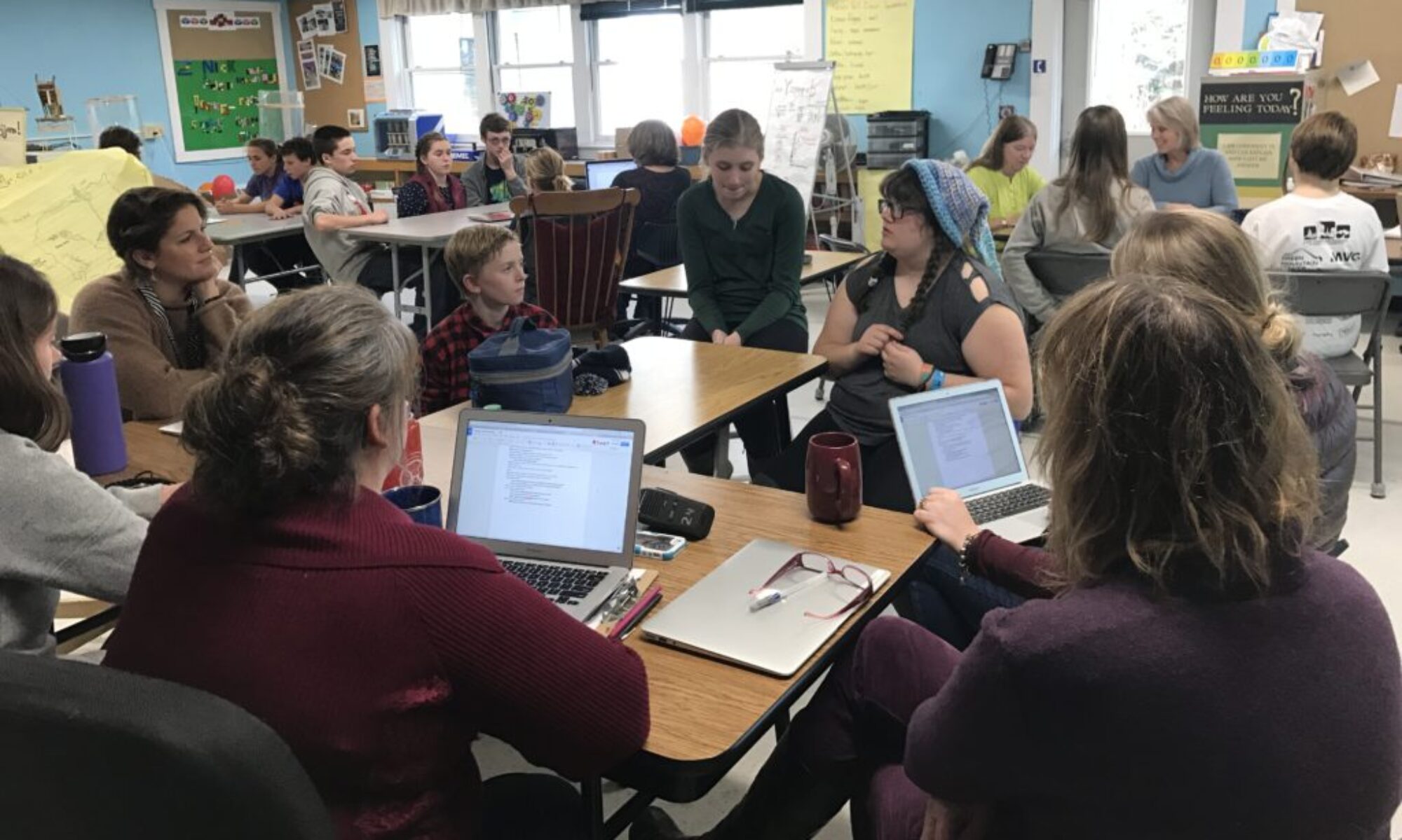

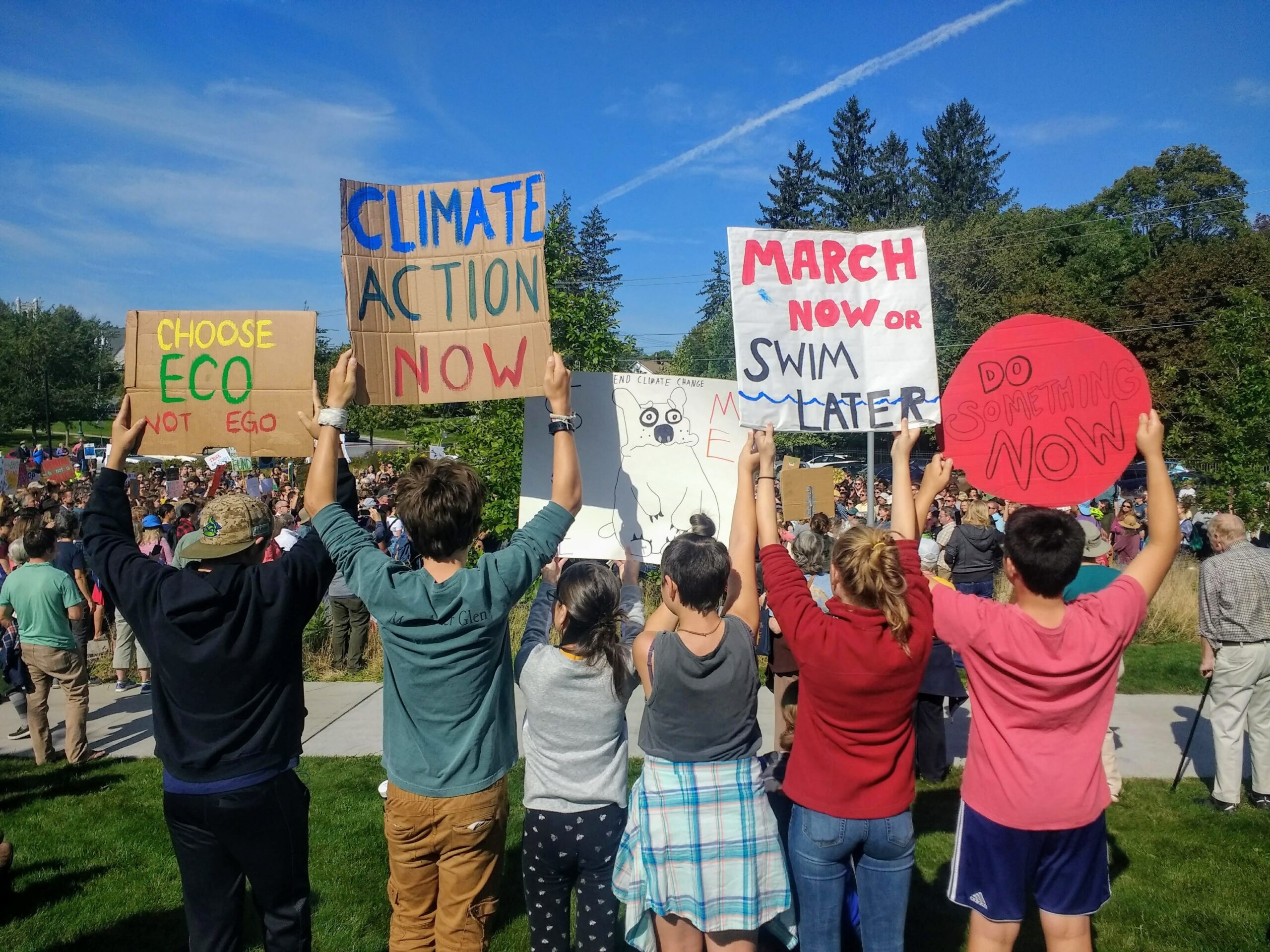
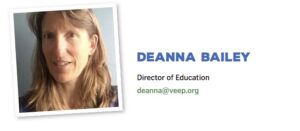
Climate change is real and is happening. We cannot deny the fact that environment is getting changed slowly. Our future generations will be affected if we dont take preventive actions now.
wow!!!
thanks for post.
Greetings! Very helpful advice on this article! It is the small changes that make the biggest difference. Thanks a lot for sharing!